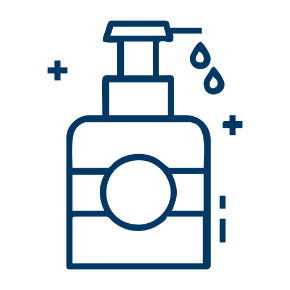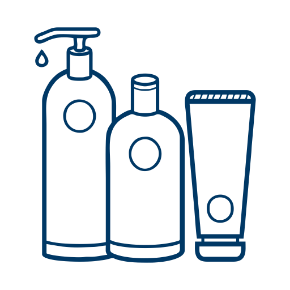Starting an anti-aging skincare routine introduces your skin to some power-packed ingredients. Some minimalist skincare enthusiasts opt to draw on the benefits of just one wrinkle fighter at a time — but, while that keeps things simple, it does not take full advantage of what is out there. Combining certain ingredients can bring out the best of both and makes for a truly effective anti-aging regimen.
Enter vitamin C benefits for skin. When paired with the revitalizing skin benefits of retinol, this duo can help promote a youthful complexion.
What Are Vitamin C and Retinol?
Vitamin C, also known as L-ascorbic acid, is a strong antioxidant. Smoke, pollution and the sun's UV rays are all factors that can contribute to visible signs of aging.
When applied topically, some of the most noticeable vitamin C benefits for skin include:
- Help improve the look of dark spots: Using vitamin C helps inhibit melanin formation, which means it may work to improve the look of dark spots and even out skin tone.
- Improve the look of sagging skin: Applying vitamin C topically may help fight signs of aging caused by the sun. Free radicals can cause skin to loosen and sag, so giving your routine an antioxidant boost is a path to a complexion that looks and feels younger.
- Brightening complexions: Free radicals can also cause skin to look dull, tired and lifeless. Applying vitamin C complements the skin's natural turnover process for healthier-looking skin.
Retinol is just one of several kinds of retinoids — a group of powerful vitamin A derivatives that can help fights signs of aging. Retinol and retinoids are often considered a holy grail wrinkle treatment, especially if you start using them in your 30s to help improve the appearance of wrinkles.
Why Use Vitamin C and Retinol Together?
With all those benefits, why would these wrinkle fighters need a partner? It is because those perks get even better with a little company — when these two ingredients team up, skin glows.
First, vitamin C works to help improve the look of dark spots, fine lines, wrinkles and sagging skin. Then, retinol steps in to help improve skin's elasticity. The result is that retinol and other retinoids may help improve skin's texture while helping to minimize the look of fine lines. Like vitamin C, retinol may also help even out skin tone and texture.
What's the Best Way to Get Vitamin C and Retinols?
Vitamin C is at its most potent when it's stable — packaging it in serum capsules protects it from exposure to light and air that would make it less effective. Retinols seem to be most effective when found in creams and serums — just make sure the ingredient in the formula says retinol.
To give your routine an anti-aging one-two punch, try first applying a vitamin C serum in the morning. In your night-time routine, use a layer of a hydrating, retinol-based cream or a lightweight retinol oil. One study found that subjects using stabilized vitamin C in a moisturizer and a retinol as part of their face regimen saw improvements in the look of discolorations in as little as four weeks.
Unfortunately, there's no real-life fountain of youth — but that does not mean you can't keep your skin feeling fresh and new.







